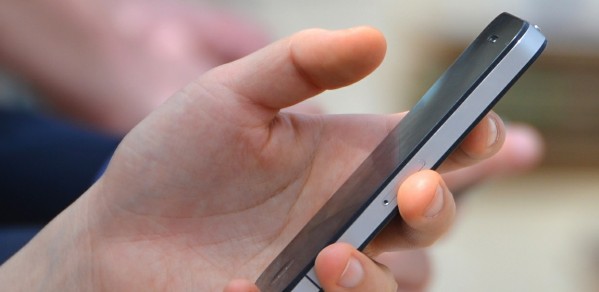
An Engineering Design Lecturer has been recognised for his research work which has revolutionised the way mobile telephone texting is carried out.
The shapes of words build up in users' muscle memory which enables users to quickly recall the shapes for words without looking much at the keyboard - similar to how you remember your PIN.
Dr Per Ola Kristensson
Dr Per Ola Kristensson, a Lecturer in Engineering Design and leader of the Department of Engineering’s Intelligent Interactive Systems group, began his research into gesture keyboard systems as an MSc student in Sweden in 2001.
He explained: “My work on gesture-based text entry for touch-screen keyboards enables users to write quickly on their mobile phones by sliding or swiping the finger over a touch-sensitive on-screen keyboard.
“For instance, to write the word "the" the user pushes down the finger on the T key, slides to the H and E keys, and then lifts up the finger on the E key. This input paradigm recognizes the shape of this gesture using a pattern recognizer. During practice, the shapes of words build up in users' muscle memory which enables users to quickly recall the shapes for words without looking much at the keyboard - similar to how you remember your PIN.
“Gesture keyboard technology is currently installed by default on all new Android and Windows Phone devices.”
Per Ola’s research resulted in a start-up called ShapeWriter, Inc., which he co-founded in 2007. This start-up released the first gesture keyboard app for iPhone and Android devices in 2008 and the app received several recognitions, including Time magazine ranking the iPhone app as a top-ten iPhone app and the Android app winning a Google Android Developer Challenge (ADC50) award.
He received the Association of Computing Machinery (ACM) User Interface Software and Technology Lasting Impact Award at the annual User Interface Software and Technology (UIST) symposium in Honolulu earlier this month.
The award is given annually to the authors of a research paper published at least ten years ago which has had a wide impact on not only the user interface technology research field but also the wider research community and society at large.
Per Ola co-wrote the award-winning research paper with his PhD supervisor Shumin Zhai who is also named on the award. Their citation reads:
“Awarded for its scientific contribution of algorithms, insights, and user interface considerations essential to the practical realization of large-vocabulary shape-writing systems for graphical keyboards, laying the groundwork for new research, industrial applications, and widespread user benefit.”

